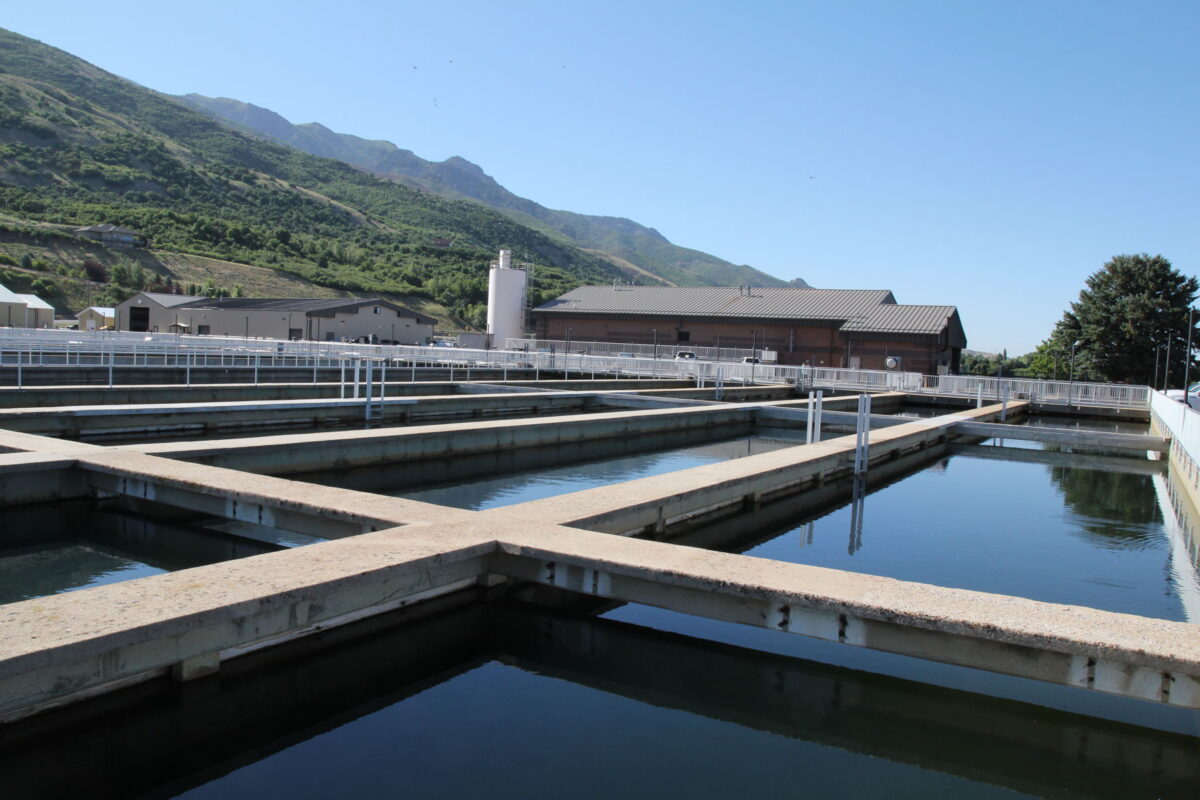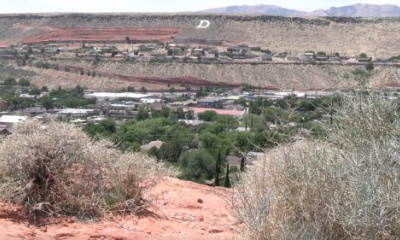The Weber Basin Water Conservancy District is trying to gauge whether secondary water meters installed at homes are having a significant impact on consumption.
The Layton-based district, which gathers water in seven large reservoirs in the Ogden and Weber River drainages, has about 23,000 retail secondary water customers, mostly homeowners, according to Jon Parry, assistant general manager. This user base does not include the water it supplies to other entities in the area, such as Pineview Water Systems, or large irrigation districts.
District crews began installing meters in 2011, with about 12,500 in place so far. Eventually, the district wants to meter all those retail connections and charge for use based on consumption. At this point, the meters are the only tool for both the district and its consumers to monitor how much water is used.
Weber Basin has five demand management areas, DMAs for short, equipped with trunkline meters. The trunkline meters report overall flow into the DMAs. Subtracting the amount of water accounted for with metered users, the district can determine the amount of water used on non-metered lots.
People with meters get monthly email reports totaling their water use and comparing it to estimated ideal consumption for that period based on their irrigable lot acreage and localized weather station data.
Users now also can sign in to a customer portal at the district website to be able to track their use each day and see how they are doing with their personalized monthly limit in gallons assigned by the district.
Weber Basin’s study of metered usage in the 2021 season concluded that the presence of meters reduced consumption by 20% to 29%, calculated by acre feet of water supplied to each connection. However, only one of the DMAs — the West Bountiful-Woods Cross area — provided reliable and consistent data, so the other four were left out of the study. With system improvements, all five DMAs will be included in the annual studies, Parry said.
The other DMAs are in Washington Terrace-South Ogden, West Haven, Centerville-Farmington and Layton.
The study calculated metered use by two methods: acre feet per connection and inches of water applied to landscaped area on each connection. The latter method uses aerial photos to calculate landscaped area on each lot.
Parry said the 2021 study and more refined studies this year and in later seasons will give the district a better handle on consumption patterns for use in ongoing education efforts and long-range planning toward charging for metered use.
While there may be consumer aversion to such charges, Parry said users on the other hand will be able to control their own costs by using less water. The current way of charging is a flat annual fee on the homeowner’s property tax bill.
The district this year sent letters to metered users with the details needed to sign up for the portal, and a warning that they should use the tool to monitor their usage to avoid drought restriction violation fees and potential water shutoff.
“In general, we have seen that 60% to 70% of people, when given the info for efficiency and accountability, will do the right thing,” Parry said. “Another 20% might need reminders but they will do their best as well. The other 10% to 15% will really struggle. For those individuals, we will have to have the penalties in place — there just isn’t a huge desire to conserve.”
Until all meters are installed and the data collection is perfected, the solutions to the stated end goal — the district’s mission statement focuses on system efficiency and reducing demand — is limited.
Another hurdle, according to Parry, is that the water district will need to be treated more as a utility. Power and natural gas utilities have close oversight of customers — they have paying monthly customers tied to an address — but Weber Basin has no way at this time of knowing when a metered property changes hands, and responsibility.
Brad Peterson, of South Ogden, said he was among the first to have a Weber Basin meter installed at his house. And at first, things didn’t go well. “It took some time for them to get it right,” he said.
The district notified him that his use was 600% of normal. But his lawn was brown. District officials came to his property, saw the desiccated lawn and said they would analyze the situation. Peterson said he eventually discovered his meter was also counting consumption by two neighbors’ systems across the street.
“I’m a numbers person,” Peterson said. “It is a personal goal of mine to do what I can do to get my water usage down but keep a good-looking yard. I don’t want to xeriscape. You need trees and you need green to keep temperatures down in the hot summer.
Peterson said he has benefitted from the meter reports over the years. His lot is almost half an acre and has 16 sprinkler zones. “I’ve cut my use way down,” he said. “I used to be over 100% but now I’m down to 60% or 70% and I want to go further. The rest can go to the Great Salt Lake.”
In West Haven, Anne Johnson was shocked when she got her first look at consumption numbers from her acre lot’s newly installed meter. About 8,700 gallons of water a day was being put on her lot five days a week — 43,500 gallons.
But knowing this year’s limit is 21,000 gallons a week causes a closer focus, she said. Tracking usage daily and tinkering with targeted applications to trees and garden space has led to refinements. For example, they now know it takes about 580 gallons to water the garden.
“This has made a huge difference in how we are looking at water,” she said. “We have been experimenting with it almost daily. We were worried about the yard turning yellow, but it does come back. It doesn’t have to be lush.”
Savannah Brandewie and her fiance are operating with a monthly allocation of 80,000 gallons on their South Ogden home lot. “We’re trying to be water wise and are trying to stick to 50% or 60% of that,” she said.
Born and raised in Utah, Brandewie is conscious of droughts and of the alarming state of the Great Salt Lake. “I know there are toxic things at the bottom of the Great Salt Lake and if it dries up there will be entirely toxic fumes,” she said. “We’re trying to reduce our use so more water can get to the Great Salt Lake.”
They also plan to xeriscape parts of their lot.








